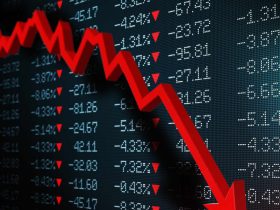Yale University’s endowment notched a 1.8% return in the year ended in June, way behind the S&P 500 index.
But Yale’s gain was ahead of the Massachusetts Institute of Technology and Duke University endowments, which recently reported investment results.
Yale’s performance followed an 0.8% increase in the 2022 fiscal year, and an outsized 40.2% advance in the 12 months ended in June 2021.
At $40.7 billion, Yale has the third-largest university endowment behind the University of Texas and Harvard University, and had been a pacesetter under the longtime leadership of David Swensen, who died in 2021.
The so-called Yale model developed by Swensen emphasized alternative assets like venture capital, private equity and hedge funds and shunned U.S. stocks, which have made up less than 3% of Yale’s endowment. Swensen’s view was that alternatives offered superior risk-adjusted returns using the right outside managers.
Yale’s smaller allocation to U.S. stocks and listed equities likely contributed to its lower return in the 12 months through June, when the S&P 500 returned 19.5%, and a 70/30 mix of U.S. stocks and bonds, with a 13.4% gain, using the S&P 500 and the
iShares Core U.S. Aggregate Bond
exchange-traded fund (AGG).
Yale’s returns topped those of MIT, whose endowment lost 2.9% in the 2023 fiscal year, and Duke’s endowment, which declined 1%.
Yale didn’t provide commentary on the returns in a press release. The fund’s focus on alternatives including venture capital scored big in its fiscal 2021 when it gained over 40%.
Yale’s return has averaged 10.9% a year over the past decade, which topped the mean return of college and university endowments by an estimated three percentage points annually. But the endowment has trailed the S&P 500 over that span, with the index returning 12.8% annually. Yale, though, has beaten a 70/30 mix of U.S. stocks and bonds, which is up 9.5% annually in the past 10 years.
This demonstrates that even with Yale’s access to top alternatives managers that it has gotten tougher to beat the indexes in the past decade. The S&P 500 has been powered by great technology stocks like
Apple
(ticker: AAPL),
Microsoft
(MSFT), and
Alphabet
(GOOGL). The alternatives market has become much more crowded, making it harder to generate market-beating returns after fees.
Yale’s endowment has also returned 10.9% annually over the past 20 years. The endowment declined in value by $700 million in the fiscal year to $40.7 billion, as spending distributions of $1.8 billion exceeded the portfolio’s return and gifts. The spending of 4% to 5% of the endowment’s value provides a sizable chunk of Yale’s budget, but puts pressure on the fund to generate that return and preserve its inflation-adjusted value.
Write to Andrew Bary at [email protected]
Read the full article here











Leave a Reply